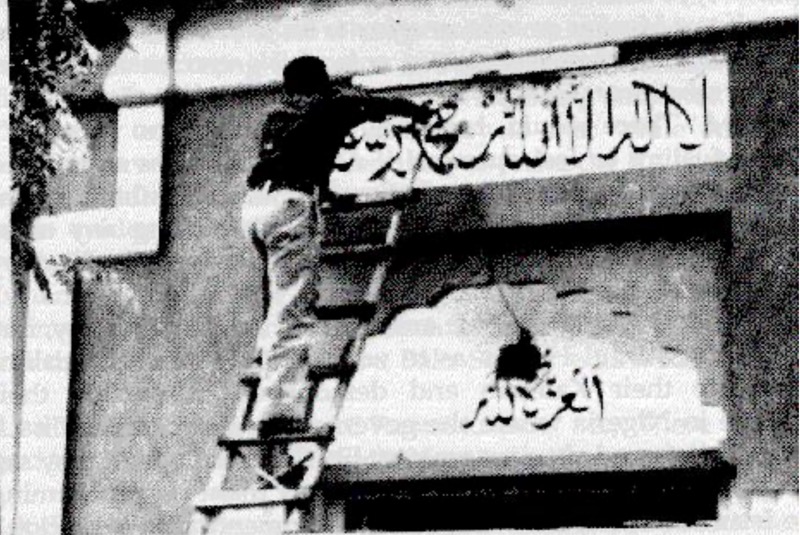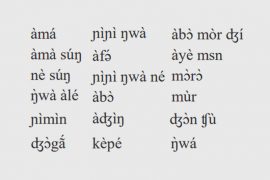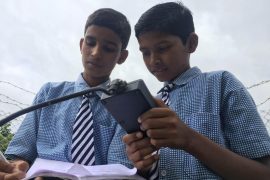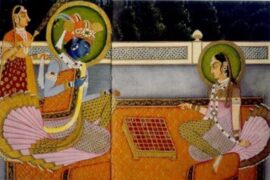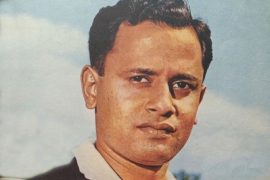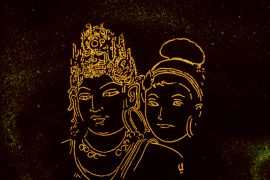The government of Pakistan points fingers at everyone in the neighbourhood. Ironically, they make big claims about the abuse of human rights and minority rights in India. Yet, while exporting Islamic radicalism and being a hub for terrorist groups, Pakistan, the bankrupt nation, has the audacity to say that it aspires to promote equal rights, curb terrorism and seek a peaceful development in international relations.
However, they look the other way when it comes to the rights of minorities in Pakistan—case in point: the demonisation, dehumanisation and brutal persecution of Pakistan’s Ahmadiyya Muslims.
The Ahmadiyya Muslim community, followers of Mirza Ghulam Ahmad, claim to have been divinely appointed as the promised Mahdi (guided one) and messiah. The movement originated in Punjab, British India, in the late nineteenth century. The Ahmadiyyas view themselves as the leader of the renaissance of Islam.
During independence, Ahmadiyya Muslims extended support to the Muslim League and migrated to Pakistan in huge numbers. However, over the years, the condition of the Ahmadiyya Muslims has worsened.
The sectarian conflict between the Sunnis and the Ahmadiyya Muslims has continued in Pakistan for decades. The Sunnis do not consider the Ahmaddiyas to be ‘true’ Muslims. Over time, the Sunnis, who formed the majority population of Pakistan, started to discriminate against and persecute the Ahmadiyya Muslims.
The persecution of Ahmadiyya Muslims started soon after the partition of India and Pakistan into two different nations. After the convention of the All Pakistan Muslim League at Dhaka, the Sunni anti-Ahmaddiya elements threatened to take ‘direct action’ after February 1953 if their demands were not met.
Soon, the All-Pakistan Muslim Parties Convention submitted an ultimatum to the Prime Minister demanding the removal of Zafarulla Khan, the first foreign minister of Pakistan, because of his religious allegiance to the Ahmadiyyas. It also demanded the removal of all Ahmadis from top government offices and the declaration of Ahmadis as Non-Muslims.
Hatred against the community solidified in the acts of the local majority. Ahmadiyya Muslims were denied burial rights for their dead, and Anti Ahmadi riots broke out in West Pakistan, especially in Punjab province. On 27 February 1953, the Pakistani government banned ‘Alfazal’, a publication of the Ahmadiyya Muslim community, for a year. The vacuum created by Alfazal was filled by another publication called ‘Farooq’ which was subsequently banned in March 1953.
Throughout March, mosques belonging to Ahmaddiya Muslims were burned down. Their shops were ransacked, community members were killed, and martial law was imposed on 6 March 1953. In the anti-Ahmadiyya riots of 1953, at least 2000 Ahmaddiya Muslims were killed and thousands more displaced. However, the violence and discrimination did not end there. Ahmadiyya Muslims across Pakistan were subjected to violence. Even those who died in the riots were denied burial several times. But until then, they had equal rights as that of a citizen.
In 1974, drastic changes were made to the Constitution of Pakistan. The change was a result of the Anti-Ahmadiyya riots, which started in Rabwah Railway Station.
On 22 May 1974, around one hundred and sixty members of the Islami Jamiat-i-Talaba were headed for Peshawar in a train. On its way, the train halted for a while at the Rabwa Railway Station. The city of Rabwa was predominantly a place of Ahmadiyya Muslims. As the train stopped, the IJT members went out and began raising slogans and cursing the community’s religious head. There was no retaliation to this. However, the community’s head ordered the Ahmadiyya youth to reach the station with hockey sticks and chains when the train stopped on its way back from Peshawar.
Seven days later, on 29 May 1974, several Ahmadiyya youths gathered at the station. As the train stopped, they attacked a bogey. A fight ensued, and around 30 members of IJT were severely beaten. Pakistan’s biased conservative Urdu media, primarily controlled and managed by Sunnis, exaggerated this incident, painting the community as evil while completely dismissing the events that preceded it. Consequently, anti-Ahmadiyya sentiments were fueled and ignited like a fire. The Sunnis massacred Ahmaddiyas throughout that year; they were tortured, maimed and killed; their homes and mosques were forcefully occupied; their shops were ransacked, and libraries burned down.
Worse, when the Ahmaddiya Muslims approached local and state authorities for protection, they refused to help them. They were forbidden from taking water from wells and were denied basic facilities available to others. Simply put, Pakistan’s government, controlled by the Sunnis, orchestrated the ethnic cleansing of Ahmaddiya Muslims.
Furthermore, under the second amendment to the Pakistani Constitution, the then Prime Minister Zulfikar Ali Bhutto declared Ahmaddiyas as Non-Muslim minorities. Ironically, the parties who rejoiced in Bhutto’s bill came out on the streets against Bhutto. Finally, in April 1979, Bhutto was sent to the gallows through a sham trial by Zia-ul-Haq—the military dictator who promised to ‘turn Pakistan into a true Islamic republic’—who claimed Bhutto was a danger to both Islam and Pakistan.’
Under Zia’s dictatorship, Ordinance XX of the Pakistani Constitution was enacted, forbidding Ahmaddiyas from identifying themselves as Muslims. It criminalised practices of greetings and offering kalma and namaz in the same mosques as others. Non-muslim mosques were specified especially for them. If anyone violated such rules, they were imprisoned and fined. Following this, under Zia’s dictatorship, the persecution of Ahmaddiya Muslims became legalised. The Ahmaddiya Muslims were boycotted from taking part in elections and harassed at every step.
In the present day, the picture is no different. Videos of Pakistan’s Sunni mobs denying the burial of Ahmadi men and women are regularly reported. Furthermore, Sunnis boycott businesses of Ahmadi people and pressurise them to convert to a radical Sunni-Wahabi fundamentalist form of Islam. The execution of Ahmaddiyas continued to such an extent that the United Nations issued a communique urging Pakistan to ‘’stop faith-based killings.’ However, the Government of Pakistan has remained quiet on this persisting issue through media censorship and the brutal use of state machinery.
The majority of Sunnis in Pakistan do not consider Ahmadiyyas to be Muslims. In a recent survey, students from private schools in Pakistan expressed their opinions on religious tolerance in the country. The figures assembled in the study reflect that even the educated classes of Pakistan legitimise the persecution of Ahmadiyyas and consider them to be the least deserving minority in terms of equal opportunities and civil rights. Worse, the teachers from these elite schools showed lower levels of tolerance towards Ahmadiyya Muslims than their Sunni pupils.
The persecution of Ahmaddiya Muslims for more than 70 years is nothing but ethnic cleansing. For years, Pakistan has discriminated against, persecuted, disenfranchised and executed Ahmadiyyas for their faith. Considering its stand on the Ahmadiyyas, it is a bit rich that Pakistan speaks about Palestine and Kashmir. It is plain hypocrisy.
-30-
Copyright©Madras Courier, All Rights Reserved. You may share using our article tools. Please don't cut articles from madrascourier.com and redistribute by email, post to the web, mobile phone or social media.Please send in your feed back and comments to [email protected]

